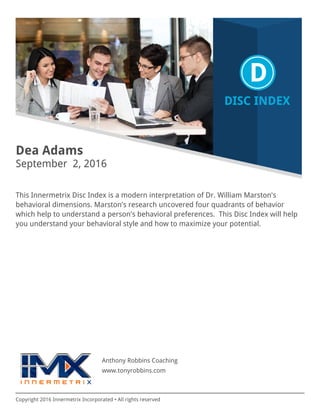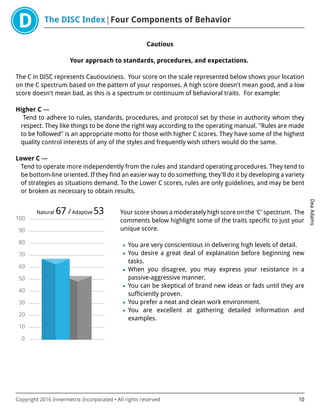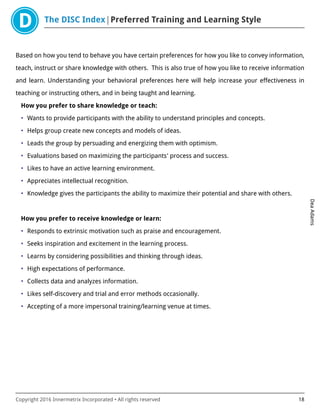Dea Adams received a report analyzing their behavioral style based on an assessment of four dimensions: Decisive, Interactive, Stabilizing, and Cautious. The report provided information on Adams' natural and adaptive styles, including strengths and tips for communication, work environment preferences, and areas for potential improvement. It also explained the theoretical background of the assessment and how Adams' scores were interpreted based on their patterns of responses.





















